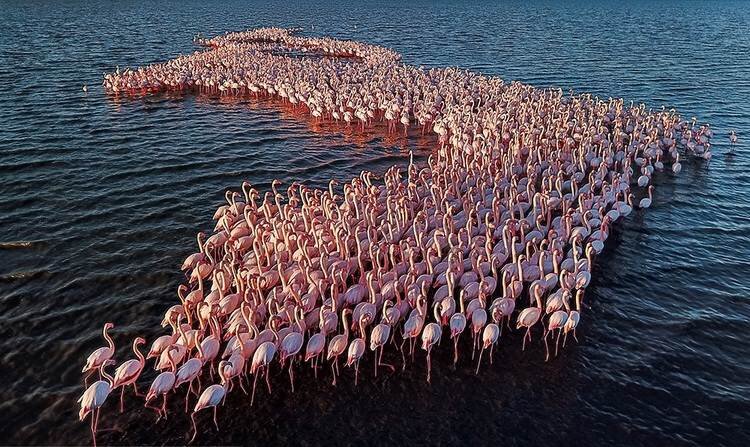Miankaleh wetland on the way to restoration

TEHRAN – Miankaleh wetland, which has been dealing with many environmental problems for years, is on the path of restoration.
Miankaleh was designated a Ramsar site in 1975.
President Ebrahim Raisi paid a visit to the international wetland in Mazandaran province on March 10, when ordered that the operational work required to rehabilitate and protect the Miankaleh wetland be given priority.
He emphasized the importance of both pumping water and running a 20-kilometer canal to release water into the wetland. The provision of equipment and infrastructure for firefighting in Miankaleh was also stressed.
In the fifth meeting of the National Headquarters for Coordination and Management of Wetlands, which was held in April, First Vice President Mohammad Mokhber called on the energy minister, department of environment chief, and governor of Golestan province to take the necessary decisions as soon as possible to implement the plan and revive this natural resource.
The country's wetlands are in danger of drying up, and we must be accountable to the people if we do not take the necessary measures to preserve, and rehabilitate the wetlands, he stressed.
He further highlighted that all related organizations should take steps in this regard, with respect to President Ebrahim Raisi’s order.
Head of the Department of Environment, Ali Selajeqeh, also called on the NGOs and local communities to join hands and restore the international wetland, saying that these are considered human potentials for the environment, and the restoration of the "Miankaleh Wetland" requires integrated management.
Director General of Mazandaran DOE, Ataollah Kavian, said that over 90 percent of the approvals of the environmental areas of this province and especially the restoration of the Miankaleh wetland have been implemented.
Some 350 billion rials (around $1.2 million) were allocated for the protection of Mazandaran's environment and the restoration of the wetland, he said, one-third of the budget has so far been provided.
Regarding the purchase of equipment and the strengthening of firefighting facilities in Miankaleh, very effective measures were taken. Also, two drones were purchased for continuous monitoring of the lagoon.
However, it is very necessary to set up environmental pollution measurement stations in this province. In addition to allocating budget to recruit protection forces and build and retrofit protection stations, he suggested.
A treasure under threat
The long and narrow peninsula is 48 kilometers long, and between 1.3 and 3.2 kilometers wide, which sets apart Gorgan Bay from the Caspian Sea. Four villages namely Ashuradeh, Qezel-e Shomali, Qezel-Mehdi, and Qavasatl are situated on the peninsula.
Major habitats include wetlands, inter-tidal mud with sandy shores, shallow marine waters, forests, peatlands, and agricultural areas.
It is home to many unique Caspian birds and reptile species native to this region. It's also a very important internationally-recognized refuge for migratory birds.
The peninsula's water deficits, additionally mismanagement, unsustainable agricultural practices, and severe depletion of the wells and groundwater resources have exacerbated the Miankaleh peninsula’s condition.
Local people earn their income from agriculture, horticulture, animal husbandry, handicrafts, carpet weaving, traditional poultry farming, and tourism.
Overgrazing, illegal hunting, fishing, deforestation, and the unplanned spread of villages are some of the challenges posing threat to the region’s environment.
In January 2020, the media reported the mysterious death of over 40,000 migratory birds in the Miankaleh peninsula; a week later, the veterinary organization announced that "botulinum poisoning" was the reason behind mass bird mortality.
In 2021, a similar incident happened, as some 10,000 bodies of lifeless migratory birds were found around the Miankaleh peninsula and Gorgan Bay as a result of botulism poisoning.
FB/MG
Leave a Comment